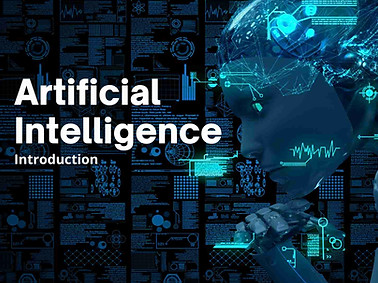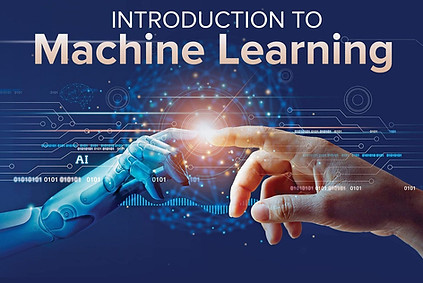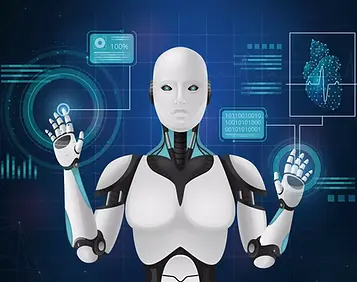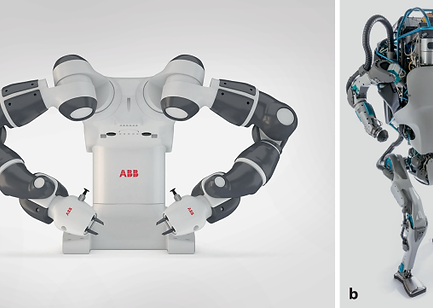
Artificial Intelligence
Integrate security throughout the development lifecycle on AWS by automating compliance checks, monitoring vulnerabilities, and implementing robust access controls.


01
Introduction to Artificial Intelligence
Artificial Intelligence (AI) is the simulation of human intelligence in machines, enabling them to perform tasks like learning, reasoning, and problem-solving. It powers technologies like chatbots, self-driving cars, and recommendation systems.
02
Machine Learning (ML) Fundamentals
**Machine Learning (ML)** is a subset of AI that enables systems to learn from data and improve performance without explicit programming. It uses algorithms like regression, classification, and neural networks to make predictions and decisions.


03
Neural Networks & Deep Learning
Neural Networks are computing systems inspired by the human brain, designed to recognize patterns through interconnected layers. Deep Learning uses multi-layered neural networks to model complex data, enabling breakthroughs in image recognition, NLP, and more.
04
Natural Language Processing (NLP)
Natural Language Processing (NLP) is a branch of AI that enables machines to understand, interpret, and generate human language. It powers applications like chatbots, translation, sentiment analysis, and voice assistants.


05
AI Applications & Emerging Trends
AI Applications & Emerging Trends explores real-world uses of AI, from healthcare and finance to autonomous systems and generative AI. Key trends include AI ethics, explainable AI, and the rise of multimodal and agentic AI models.

Robotics
Robotics blends AI, engineering, and automation to create intelligent machines that perform tasks from precision manufacturing to autonomous exploration reshaping industries and daily life.


01
Introduction to Robotics
Robotics is the interdisciplinary field of designing, building, and programming intelligent machines that can sense, process, and interact with the physical world to automate tasks and enhance human capabilities.
02
Robot Kinematics & Dynamics
Robot kinematics studies the motion of robots without considering forces, focusing on position, velocity, and trajectory using geometric and mathematical models.


03
Robot Perception & Sensors
Robot perception equips machines with the ability to interpret their environment using sensors like cameras, LiDAR, and touch, enabling real-time decision-making and autonomy.
04
Robot Control Systems
Robot control systems govern motion and behavior through algorithms, translating sensor inputs and task goals into precise actuator commands for stability and accuracy.


05
Robot Programming & AI Integration
Robot programming combines coding, machine learning, and AI to create adaptable behaviors from simple scripted tasks to complex neural network-driven decision-making.

FullStack Development
Full-stack developers are adept at handling multiple aspects of a project, from user interface design to server-side scripting and database management.


01
Frontend Development
The frontend frameworks are detailed in the following flowchart, and the training and internships are conducted by experienced IT professionals.
02
Backend Development
The Backend frameworks are detailed in the following flowchart, and the training and internships are conducted by experienced IT professionals.

.png)
03
Relation Databases
This relation database is used in the fullStack development which followed the flow chart
04
No SQL DB
This No SQL database is used in the fullStack development which followed the flow chart


05
Tools
This tools is used in the fullStack development which followed the flow chart



Cloud Computing with AWS & Azure
Cloud computing with AWS and Azure provides scalable, on-demand infrastructure and services, enabling efficient deployment, management, and optimization of applications in the cloud.


01
Cloud Fundamentals
Cloud fundamentals involve understanding the core principles of cloud computing, including on-demand resource allocation, scalability, and pay-as-you-go pricing models.
02
Core Infrastructure
Core infrastructure encompasses the essential components of IT systems, including servers, storage, and networking, that support and enable the operation of applications and services.


03
Identity and Security
Identity and security focus on managing user identities and access controls while protecting systems and data from unauthorized access and cyber threats.
04
Database and Analytics
Database and analytics involve managing data storage and retrieval systems while leveraging analytical tools to extract insights and support decision-making.


05
Application Services
Application services provide essential functionalities and frameworks for developing, deploying, and managing software applications in a scalable and efficient manner.

Data Analytics
A data analytics course teaches you to collect, process, and interpret data using statistical tools and visualization techniques to uncover actionable insights.
Learn Python, SQL, and machine learning fundamentals to transform raw data into strategic decisions for business, healthcare, finance, and more.


01
Introduction to Data Analytics
Introduction to Data Analytics explores the fundamentals of collecting, cleaning, and analyzing data to extract meaningful patterns and drive informed decisions.
02
Data Wrangling & Preprocessing
Data wrangling & preprocessing transforms raw, messy data into a clean, structured format handling missing values, outliers, and inconsistencies for accurate analysis.


03
Exploratory Data Analysis (EDA) & Visualization
Exploratory Data Analysis (EDA) uncovers patterns, trends, and anomalies in datasets using statistical summaries and visualizations to guide hypothesis-building.
04
Statistical Modeling & Machine Learning
Statistical Modeling uses probability and inference to uncover relationships in data, while Machine Learning leverages algorithms to predict outcomes and automate decisions from patterns.


05
Big Data & Advanced Topics
Big Data & Advanced Topics explores scalable technologies like Hadoop, Spark, and NoSQL databases to process massive datasets beyond traditional computing limits.
_edited.jpg)